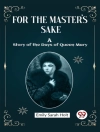In ‘Peter the Priest, ‘ Mór Jókai delivers a rich tapestry of narrative that intertwines themes of faith, sacrifice, and the plight of the common man during a tumultuous period in Hungarian history. Jókai’s signature Romantic style is evident in his vivid characterizations and eloquent prose, drawing readers into the emotional depth of his protagonist, Peter, who grapples with spiritual and moral dilemmas. Set against the backdrop of societal upheaval, the novel explores the interplay between personal conviction and societal expectation, rendering it both a poignant character study and a reflection on the Hungarian national identity of the 19th century. Mór Jókai, often referred to as the ‘Hungarian Victor Hugo, ‘ was deeply influenced by his environment, particularly his experiences with the political struggles of Hungary. His extensive travels and interactions with diverse cultures, paired with his background in law and journalism, informed his understanding of the human condition. Jókai’s literary career flourished during a time when Hungary was seeking its identity, and his works often underscore the tension between tradition and progress, which is poignantly illustrated in ‘Peter the Priest.’ This novel is highly recommended for readers interested in literary works that delve into the complexities of faith and morality. Jókai’s exploration of personal and collective identity resonates powerfully, making this book not only a significant contribution to Hungarian literature but also a profound and engaging read that encourages reflection on one’s values and beliefs.
About the author
Mór Jókai, also known as Maurus Jokai, was a towering figure in 19th-century Hungarian literature and is revered for his prolific output as a novelist and his mastery of romantic prose. Born on February 18, 1825, in Komárom, Hungary, Jókai’s literary career spanned over six decades, during which he penned more than a hundred novels. He most notably merged social realism with romanticism, capturing the transformative epochs of his nation’s history and the complexities of human characters with depth and empathy. His most famed work, ‘The Man with the Golden Touch’ (Az arany ember), continues to endure as a classic of Hungarian literature. ‘Peter the Priest’ is another significant contribution by Jókai that showcases his ability to intertwine historical events with fiction, creating a compelling narrative. A contemporary of Jókai described him as not just Hungary’s, but Europe’s master novelist, a sentiment echoed by the continued respect for his work. Jókai was also a keen participant in Hungarian political life, contributing to the country’s 1848 revolution. His contributions to literature and national culture were recognized by his election to the Hungarian Academy of Sciences. Jókai passed away on May 5, 1904, in Budapest, yet his work remains a vital part of Hungarian cultural heritage (Király, 1975).












